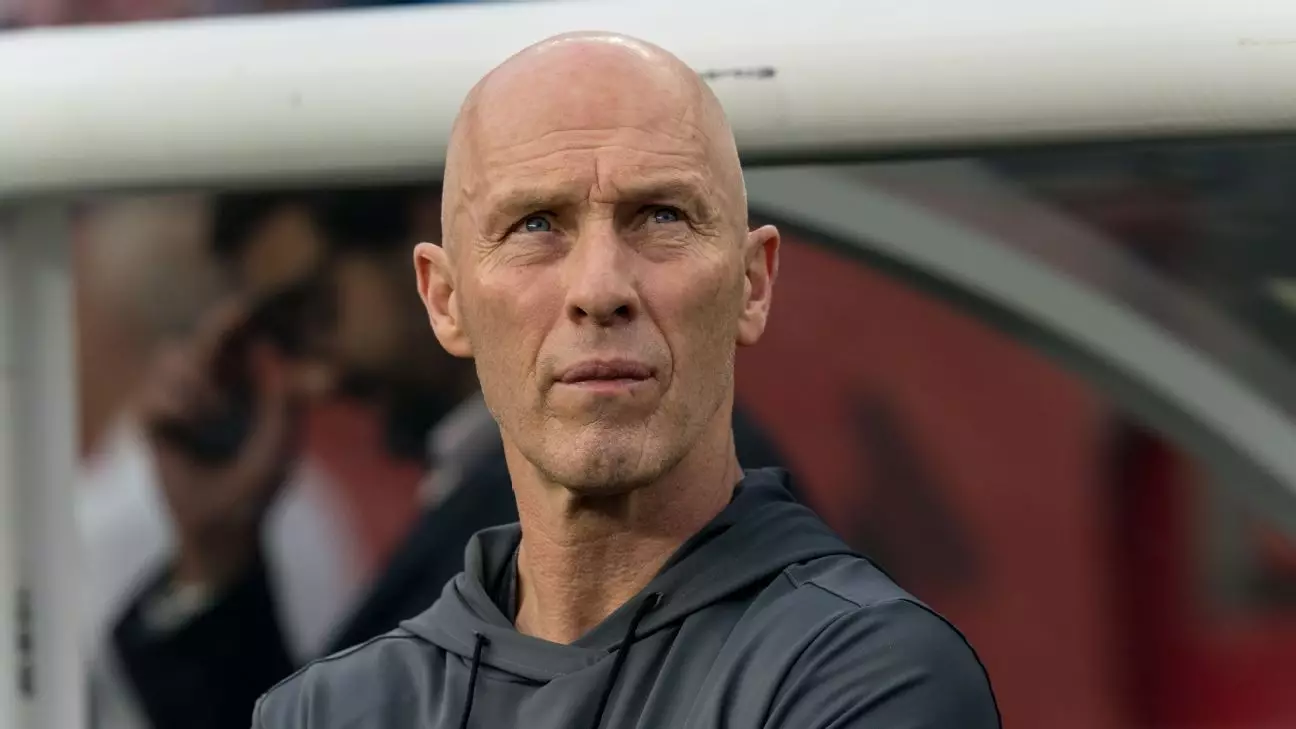Bob Bradley, a name synonymous with American soccer, recently concluded his second tenure as the head coach of Stabaek Football Club in Norway. The decision to part ways was mutual and effective immediately, as announced by the club on Monday. This marked a significant juncture in Bradley’s career, occurring after Stabaek’s disappointing performance in which they suffered three consecutive losses, including a narrow 3-2 defeat against IK Start. Despite remaining in seventh place in the Norwegian second tier with seven matches left, the team was clearly struggling to maintain momentum. Such outcomes raised critical questions regarding the efficacy of strategies employed by the coaching staff and the overall state of player performance.
Bradley’s connection with Stabaek is historical and profound. His first tenure, from 2014 to 2015, held the distinction of being pioneering, as he became the first American to manage a club in the top tier of a European league, leading Stabaek to the Europa League. However, his return was marked by disappointment as he failed to replicate past successes. Stabaek’s chairman, Espen Moe, expressed gratitude for Bradley’s contributions but acknowledged the team’s limited development under his guidance. This conflicting narrative leaves one pondering whether Bradley’s past achievements could overshadow the necessity for immediate results in the present.
Bradley’s career is littered with high-profile roles and thrilling accomplishments, including leading the U.S. Men’s National Team to the round of 16 in the 2010 FIFA World Cup. Yet, his coaching journey has also been fraught with challenges, including a frustrating dismissal in 2011 after a disappointing Gold Cup outcome against Mexico. Such is the nature of coaching; success is often fleeting, and a series of poor results can quickly endear coaches to the exit door. In Stabaek’s case, despite Bradley’s experience and ambition, a lack of consistent performance from the squad contributed heavily to the decision to terminate his contract. The irony here is striking; while Bradley is credited with pioneering strides in American soccer, the club’s continued struggles during his latest tenure seem to reflect limitations that require deeper assessment.
As Bob Bradley steps away from Stabaek, the looming question on everyone’s mind is: what comes next? The landscape of Major League Soccer (MLS) presents multiple opportunities, with several clubs seeking fresh leadership. Franchises such as Atlanta United FC, Chicago Fire FC, and FC Dallas are in need of direction, and Bradley’s extensive experience could very well match the demands of these teams. His past leadership successes may draw interest, but Bradley will need to reassess his approach, perhaps embracing newer systems or philosophies that resonate with today’s fast-evolving game.
The professional coaching realm is characterized by its dynamic nature. Success does not merely depend on historical accolades; rather, adaptability and the ability to evolve with the game’s trends hold utmost importance. Bradley will need to embrace these characteristics as he contemplates his next move. His historical adherence to particular tactical styles may require adjustment. As the sport continues to evolve, so too should the strategies and philosophies of its leaders.
In closing, while Bob Bradley’s exit from Stabaek marks the end of a chapter in both his career and the club’s journey, it also opens a landscape filled with potential opportunities. The footballing world is ever-changing, and for Bradley, this may serve as the catalyst needed to ignite a resurgence in his coaching trajectory. His historical significance in American soccer remains unblemished, but where he leads next will add new narrative threads to his already colorful coaching tapestry. It’s a time for reflection, learning, and ultimately, resurgence—qualities that Bradley must harness as he charts his next course in the ever-complex world of competitive soccer.

